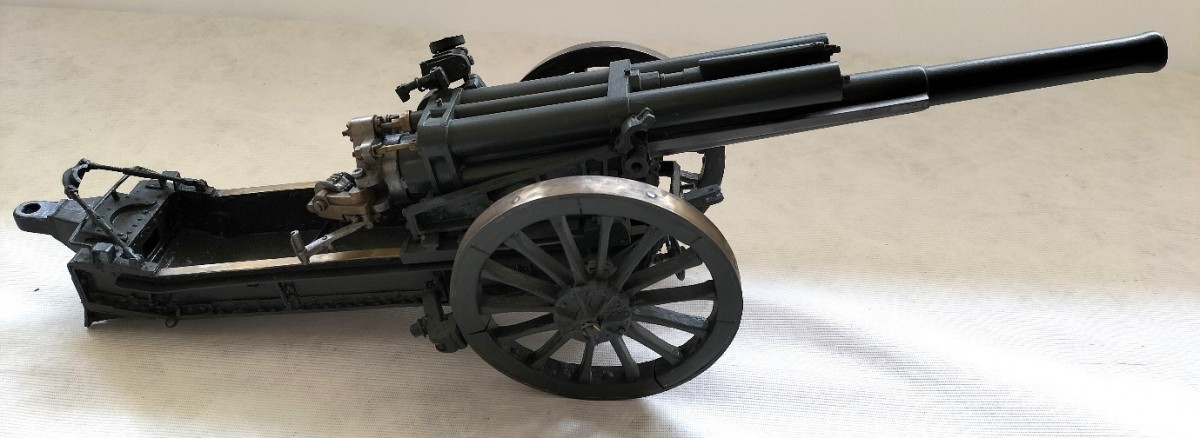Model British 60-pounder Breech-Loading Gun Mark I on Mark I Carriage. Scale 1/12. (MOD 25/607).
This heavy field gun was one of the British Army’s great successes during the First World War due to its modern design which gave it reliability and ruggedness. Its 1904 design came from the many lessons learned from the Boer War. Boer heavy field guns were superior to those used by the British both in mobility and range. It was clear that for any future conflict, the British needed a modern heavy field gun.
The requirements were demanding: the gun should be able to send as heavy a weight of projectile as possible to 10,000 yards but with a carriage weight of under four tons. After 1903 trials involving three companies the design submitted by Armstrong’s Elswick Ordnance Company was accepted, production started in 1904 and entered service in 1905 replacing the 4.7-inch Field Gun.
Britain entered the Great War in 1914 with forty-one of these quick-firing guns and although its weight was half a ton heavier than planned it could still be pulled by a team of between eight to twelve horses or by a mechanical vehicle usually the Holt Tractor.
Each gun was manned by ten members of the Royal Garrison Artillery and formed into Heavy Batteries which operated four guns at the start of the war increasing to six in 1916 for a higher concentration of firepower. Seventy-six batteries, including two Canadian batteries, served with the British Expeditionary Force on the Western Front and twenty-five batteries in other theatres. Practically all the detachments found favour with this gun. Its mere presence raised the spirits. A Gunner of the 90th Heavy Battery Royal Garrison Artillery in Gallipoli commented in 1915 that the
“most heartening thing of all was the sound of one of our 60-pounders which opened fire just about the time we did, its whip-crack being audible above everything.”
The ammunition was high-explosive, shrapnel, and gas. A maximum range of 10,000 yards could be expected with a firing rate of one to two rounds a minute. The total wartime production was 1773 barrels and 1397 carriages. At the end of the war, 571 remained in service. It says something of its durability and favour with the Gunners that it was not withdrawn from service until 1941 and featured in training use until 1944.
It is not known who made this fine model. So intricate is it that the breech mechanism can be opened and closed. There are no tell-tale inscriptions or stamps on the body. It is quite possible that it was manufactured in the Elswick Ordnance Company Works, Newcastle, either as an early pre-production example or for display in the Director’s office in the company cabinet.


